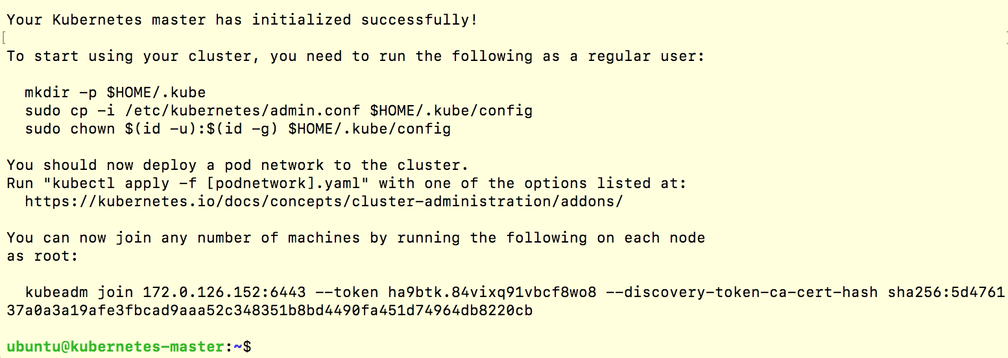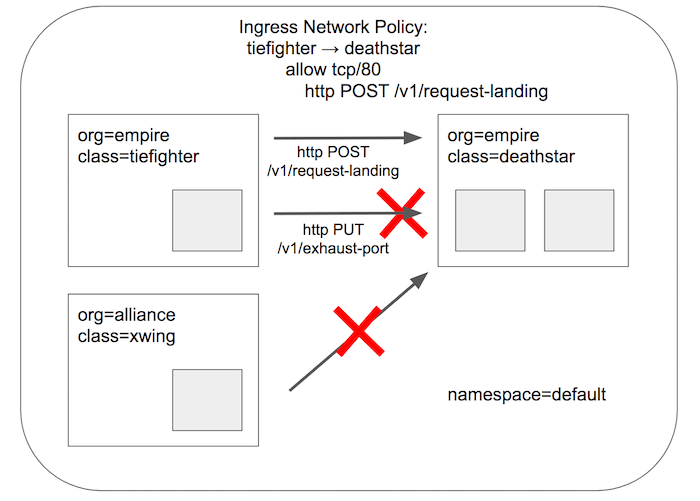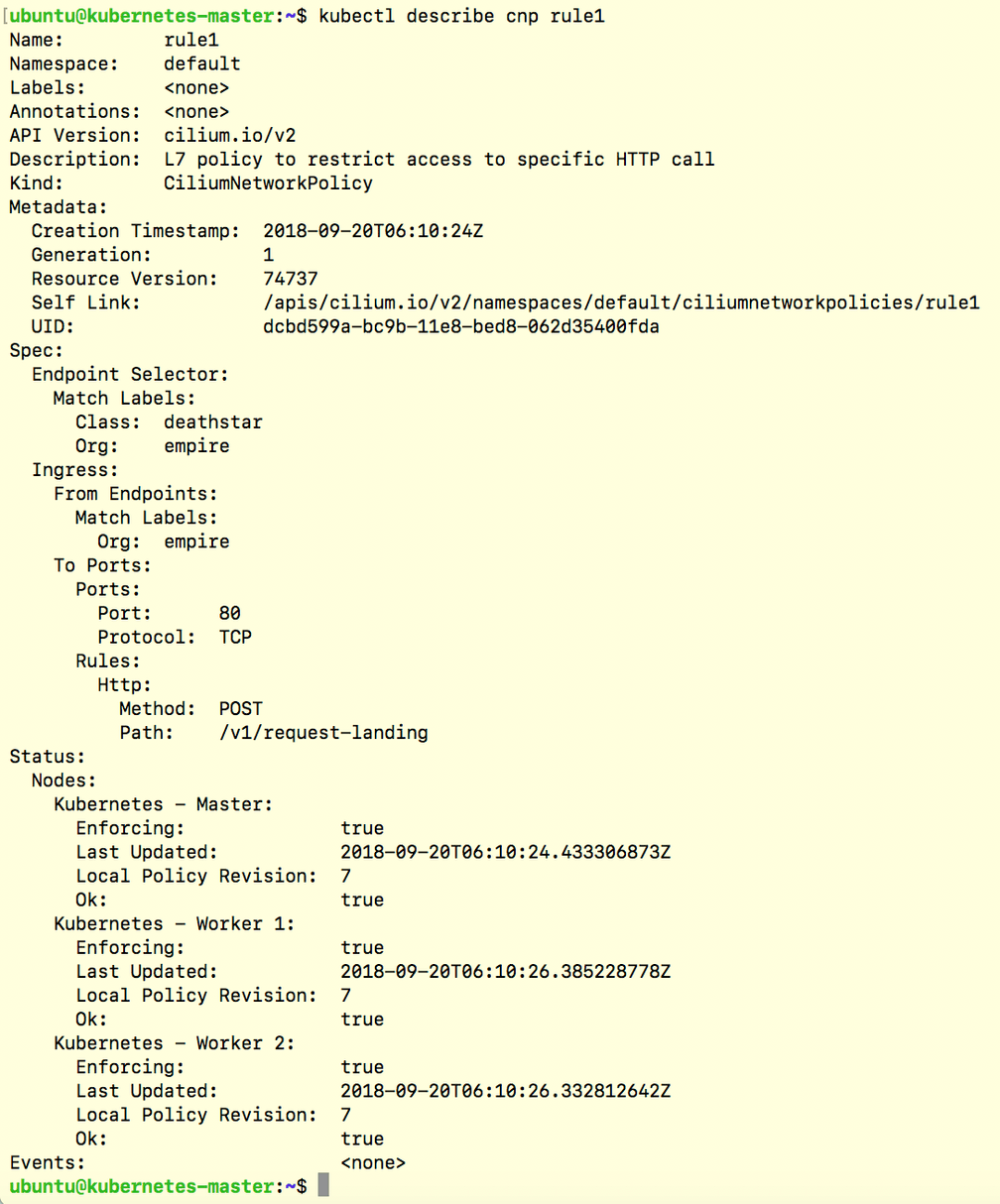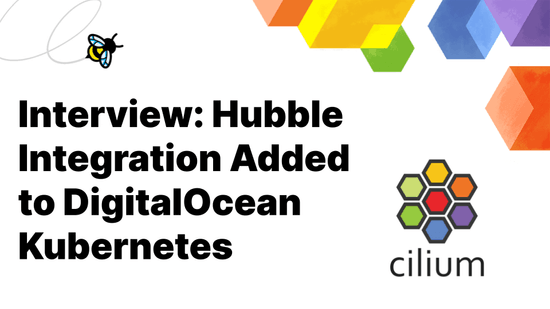Cilium How-To: Install with Kubernetes on Ubuntu 18.04
Several users are looking to run Kubernetes with Cilium on Ubuntu 18.04 LTS. The Bionic Beaver (codename for Ubuntu 18.04) is an easy choice for deploying Kubernetes with Cilium as it ships with the default Linux kernel version 4.15.
What is Cilium?
Cilium is open source software that transparently secures network connectivity between application services deployed using Linux container orchestration platforms like Docker and Kubernetes. As of Cilium 1.1, it supports multiple container runtimes including Docker, cri-o, and containerd.
Cilium is based on a Linux kernel technology called BPF. Cilium enables this powerful technology to dynamically insert security visibility and control logic within Linux itself. Because BPF runs inside the Linux kernel, Cilium security policies can be applied and updated without any changes to the application code or container configuration.
Check out our docs for a more detailed introduction to Cilium.
Software Versions
- Operating System: Ubuntu 18.04
- Kubernetes: v1.11.0
- Kubernetes CNI plugin: Cilium v1.2.3
- Installer: kubeadm.
Prerequisites
- Multiple machines set up with Ubuntu 18.04 (bare-metal, AWS instances, GCE instances, etc).
- Privileged access to the Ubuntu servers as root or with
sudofor installing packages.
For AWS deployments, you can choose a community AMI for your location: https://cloud-images.ubuntu.com/daily/server/locator/. We used the community AMI ami-d8d997a0 to launch 3 Ubuntu 18.04 instances. You'll need to open up your Security Group (SG) to allow communication on at least the following ports.
| Port | Description |
| 22 | SSH from outside |
| 443 | k8s API within SG |
| 2379-2380 | etcd-operator within SG |
| 4240 | HTTP L3 checks within SG |
| 6443 | kubeadm/k8s API access |
| 8472 | vxlan within SG |
| 9090 | optional for metrics |
| ICMP | ICMP check within SG |
Be sure to note that some steps are not persistent across host restarts and need to be added to a start-up script for a permanent configuration.
Set-Up
In this How-To guide, we'll work with 3 nodes running Ubuntu 18.04 to create 1 master node and 2 worker nodes in a single Kubernetes cluster. We'll assume a clean set-up with default Ubuntu 18.04 settings. We recommend at least 2 nodes to differentiate the installation steps required for master and worker nodes to scale out later on.
Give unique names to your master:
sudo hostnamectl set-hostname kubernetes-masterAnd to your worker nodes:
sudo hostnamectl set-hostname kubernetes-worker1sudo hostnamectl set-hostname kubernetes-worker2Servers require a host reboot in order for the hostname change to take effect.
Instructions
Update and Install Docker
Assuming a fresh installation of Ubuntu 18.04 is on your machines, update package lists, install docker and enable it on all nodes.
sudo apt-get updatesudo apt install docker.ioExecute the following to enable Docker after reboot.
sudo systemctl enable dockerInstall Kubernetes
Download and install the signing key for Kubernetes on master and worker nodes:
sudo su -c 'curl -s https://packages.cloud.google.com/apt/doc/apt-key.gpg | apt-key add'Next, we're ready to add the Kubernetes repo and install Kubernetes on all nodes.
- Note: At the time of writing, only Ubuntu 16.04 (Xenial) packages for Kubernetes were available. We will update once k8s for Bionic is available.
As a regular user, add the repo and install package.
sudo apt-add-repository "deb http://apt.kubernetes.io/ kubernetes-xenial main"
sudo apt install kubeadmAt the time of writing, Kubernetes requires swap to be turned off. For work-arounds, check this GitHub issue. Disable memory swap immediately for all nodes:
sudo swapoff -aThis is not persistent across host restarts so add to /etc/fstab accordingly for persistence.
Initialize the Kubernetes Master
sudo kubeadm init --pod-network-cidr=10.217.0.0\/16
- Note: the final output from the command above to enable a regular user with the
.kubeconfig and extract the join command required for worker nodes to join the cluster.
As a regular user, enable kubectl on the kubernetes-master node to use your cluster:
mkdir -p $HOME/.kube
sudo cp -i /etc/kubernetes/admin.conf $HOME/.kube/config
sudo chown $(id -u):$(id -g) $HOME/.kube/configJoin Worker Nodes to the Kubernetes Cluster
On each of the worker nodes, execute the kubeadm join command from the master init output as root.
sudo kubeadm join 172.0.126.152:6443 --token XXXX --discovery-token-ca-cert-hash sha256:XXXXYou should see a message of successful cluster-join:

You will see that all the nodes have successfully joined by executing the following from the kubernetes-master node:
kubectl get nodes- Note: the nodes will only become
READYonce Cilium is installed.
Install Cilium
We will deploy Cilium on the Kubernetes cluster as the CNI plugin through a DaemonSet configuration.
- Optional BPF Filesystem Mount: We will mount the BPF filesystem on each node in the cluster. This step is optional and pins BPF resources to a persistent filesystem structure, thus persistent across
cilium-agentrestarts.
sudo mount bpffs /sys/fs/bpf -t bpfThis is not persistent across host restarts so add to /etc/fstab accordingly for persistence.
- Cilium + etcd-operator Deployment
Cilium requires a KV-store to store state, including Policy Identities. At the time of writing, we introduced the etcd-operator to simplify the deployment of Cilium and its KV-store (etcd), of which Cilium will manage.
Download the Cilium repo folder and unzip it.
wget https://github.com/cilium/cilium/archive/v1.2.3.tar.gz
tar -xvf v1.2.3.tar.gzGo to the add-ons folder to follow the instructions in the etcd-operator README. It outlines the scripts for the etcd-operator and Cilium deployment.
cd cilium-1.2.3/examples/kubernetes/addons/etcd-operator/
cat README.mdAt a high level, the steps from the README include:
- Prerequisites: install CloudFlare PKI/TLS toolkit
- Create etcd certificates using the provided script
- Deploy the generated certificates to your Kubernetes cluster
- Ensure the DNS pods have the required label
- Deploy the Kubernetes descriptors for etcd-operator and Cilium.
Confirm Cilium is up with the CURRENT count equal to the number of nodes in your cluster (may take several minutes):
kubectl get daemonsets -n kube-systemConfirm your worker nodes have successfully joined the cluster and are READY now that Cilium is up by executing the following from the kubernetes-master node:
kubectl get nodesDeploy Your First Application and Security Policy
Let's run through a short HTTP example to demonstrate Cilium's API-aware network security policy in action.
Deploy a Star Wars Demo Application
kubectl create -f https://raw.githubusercontent.com/cilium/cilium/v1.2.3/examples/minikube/http-sw-app.yamlConfirm it's up:
kubectl get pods,svcAnd check the pods and services connectivity:
kubectl exec xwing -- curl -s -XPOST deathstar.default.svc.cluster.local/v1/request-landing
<span style="color:grey">Ship landed</span>
kubectl exec tiefighter -- curl -s -XPOST deathstar.default.svc.cluster.local/v1/request-landing
<span style="color:grey">Ship landed</span>Enforce an L7 Policy with CiliumNetworkPolicy
The policy will deny xwing access completely by its identity label and allow tiefighter to only make a specific HTTP call.

kubectl create -f https://raw.githubusercontent.com/cilium/cilium/v1.2.3/examples/minikube/sw_l3_l4_l7_policy.yamlYou can take a look at the Cilium Network Policy to see the HTTP-specific policy:
kubectl describe cnp rule1
Test Cilium Security Enforcement
Now that your CiliumNetworkPolicy is in place, you can see it in action! Try to access the deathstar service from xwing:
kubectl exec xwing -- curl --connect-timeout 5 -XPOST deathstar.default.svc.cluster.local/v1/request-landingThis command is denied by the (L3) identity-based policy. Use CTRL-C to exit prior to timeout.
Next, see what tiefighter can access. Per the policy, a POST to /request-landing should be allowed:
kubectl exec tiefighter -- curl -s -XPOST deathstar.default.svc.cluster.local/v1/request-landing
<span style="color:grey">Ship landed</span>whereas other HTTP calls to the deathstar service are forbidden:
kubectl exec tiefighter -- curl -s -XPOST deathstar.default.svc.cluster.local/v1/exhaust-port
<span style="color:grey">Access denied</span>Hooray! You have successfully deployed Cilium with Kubernetes on Ubuntu 18.04 and enforced an API-aware network security policy to provide least privilege security.
Next Steps
We have several examples of API-aware network policy for various protocols. They are easy to check out through our Getting Started Guides. We'd love to hear how you're doing! Please join our community on Slack and let us know how you did.


